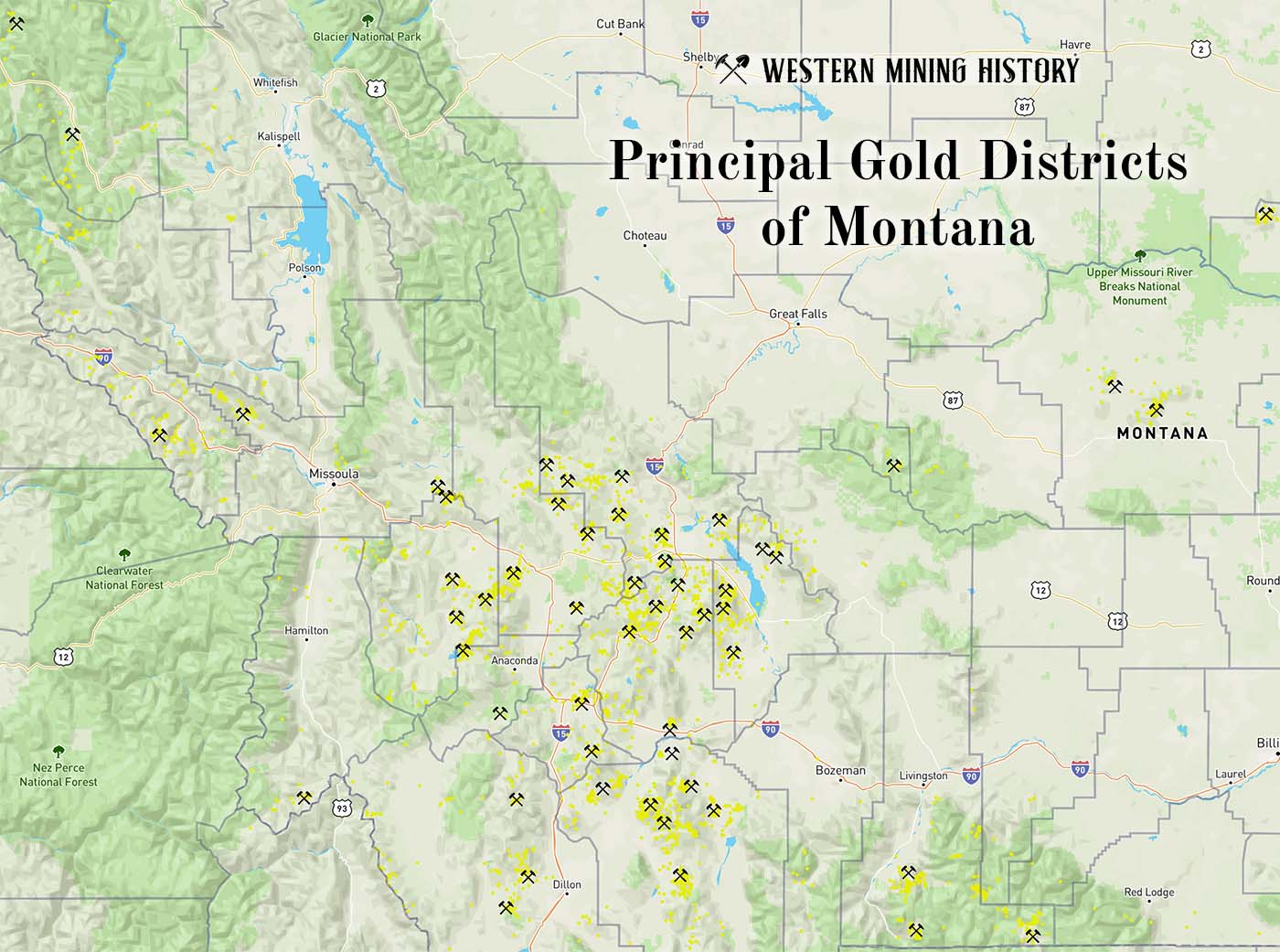The Dissett Mine is a phosphorus-phosphates mine located in Granite county, Montana at an elevation of 5,640 feet.
About the MRDS Data:
All mine locations were obtained from the USGS Mineral Resources Data System. The locations and other information in this database have not been verified for accuracy. It should be assumed that all mines are on private property.
Mine Info
Elevation: 5,640 Feet (1,719 Meters)
Commodity: Phosphorus-Phosphates
Lat, Long: 46.35, -113.29139
Map: View on Google Maps
Dissett Mine MRDS details
Site Name
Primary: Dissett Mine
Secondary: Red Hill
Commodity
Primary: Phosphorus-Phosphates
Tertiary: Iron
Tertiary: Aluminum
Location
State: Montana
County: Granite
District: Philipsburg (Granite-Flint Creek) District
Land Status
Not available
Holdings
Not available
Workings
Type: Underground
Ownership
Owner Name: James E. Dissett
Home Office: Philipsburg, Mt. 59858
Production
Year: 1948
Time Period: 1946-1948
Description: Cp_Grade: ^30.0% P205
Deposit
Record Type: Site
Operation Category: Past Producer
Operation Type: Unknown
Year Last Production: 1949
Discovery Year: 1920
Years of Production:
Organization:
Significant: N
Physiography
General Physiographic Area: Rocky Mountain System
Physiographic Province: Northern Rocky Mountains
Physiographic Detail: Flint Creek Range
Mineral Deposit Model
Not available
Orebody
Not available
Structure
Type: R
Description: Philipsburg Batholith
Type: L
Description: Wyman Gulch Synclinephilipsburg Overthrust
Alterations
Not available
Rocks
Name: Phosphorite
Role: Host
Age Type: Host Rock
Age Young: Late Permian
Name: Phosphorite
Role: Host
Age Type: Host Rock Unit
Age Young: Late Permian
Analytical Data
Analytical Data: 3.01% FE AND AL.
Analytical Data: CONCENTRATE 65% BPL
Analytical Data: CRUDE 40% BPL
Materials
Gangue: Quartz
Comments
Comment (Reserve-Resource): USGS BULL 847D.
Comment (Production): SEVERAL CAR LOADS
Comment (Workings): 1920'S 200 FT INCLINED SHAFT WAS MADE. A CROSSCUT ADIT AT 5700 FT ELEVATION WAS DRIVEN TO DEVELOP THE DEPOSIT. IN1946-1948 THE CROSSCUT WAS EXTENDED 1100 FT, RAISE, STOPES WERE ADDED.
Comment (Deposit): THE RETORT MEMBER IS 12-20 FT THICK AND CONSISTS OF INTERBEDDED SHALES AND PHOSPHORITES; THE STRUCTURE DIPS FROM 12 N ON THE NOSE TO 18-36 NW ON THE LIMBS. THE MINING SECTION IS 2.2-4.4 FT THICK AND INCLUDES 2 LAYERS OF PHOSPHORITE SEPARATED BY A SEAM OF CLAYEY PHOSPHATIC SHALE.
Comment (Location): SW SLOPE OF RED HILL
References
Reference (Deposit): USGS BULL 847D, P. 175-88.
Reference (Deposit): MBMG SPEC PUB 25, &.7.
Reference (Deposit): USBM RI 6611, P. 57, 70-2.
Reference (Production): USGS BULL 847DUSBM RI 6611, P. 70.
Principal Gold Districts of Montana

In Montana, 54 mining districts have each have produced more than 10,000 ounces of gold. The largest producers are Butte, Helena, Marysville, and Virginia City, each having produced more than one million ounces. Twenty seven other districts are each credited with between 100,000 and one million ounces of gold production. Read more: Principal Gold Districts of Montana.